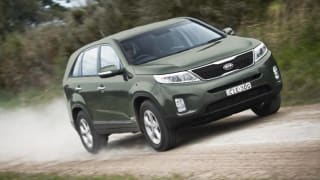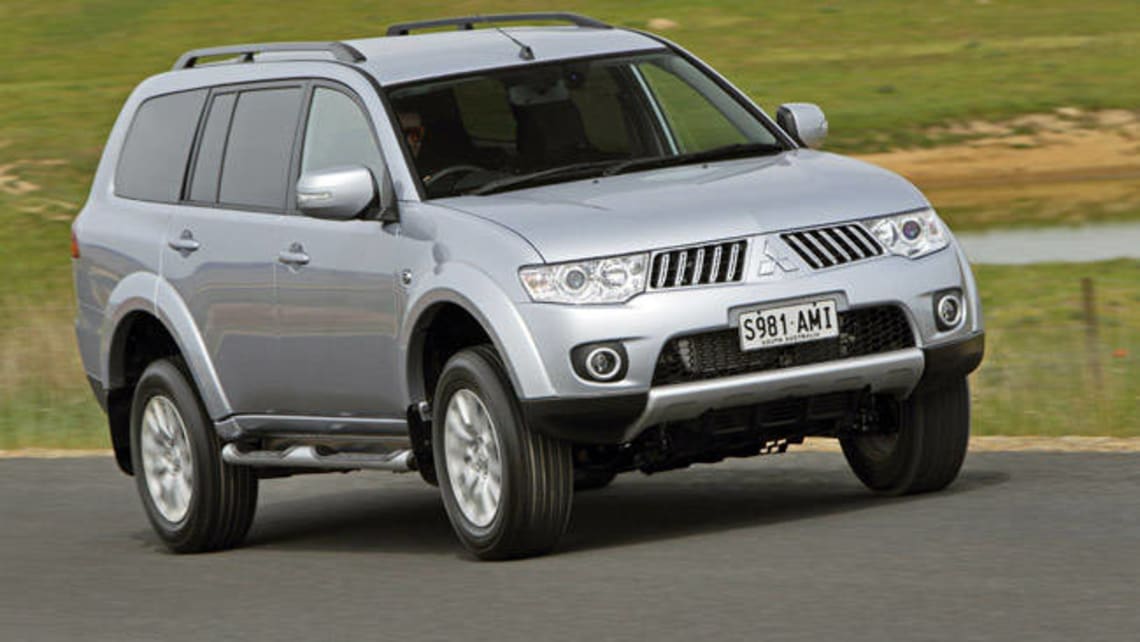
Kia Sorento Si AWD 2012 review
People must be recalling the ‘populate or perish’ warning of last century, judging by the boom is...
Browse over 9,000 car reviews

Mitsubishi has joined the crowd of medium SUVs offering two-wheel drive instead of four.
Why drive all wheels when two will do? It's a trend driving one of the fastest-growing segments of the car market.
Almost all the popular SUVs are available with two-wheel drive, saving drivers thousands of dollars compared with their all-wheel drive stablemates.
The difference here is the Challenger started life as a serious 4WD with a low-range gearbox, a full chassis and off-road capability, unlike most of its rivals which came with single-range all-wheel drive and more car-like underpinnings.
And the Challenger 2WD is propelled by the rear axle not the front as is the norm.
But while eliminating the transfer case and front drive line saves $5000 and about 120kg, there is a compromise or two.
Stability is similar to the 4WD on high-grip surfaces, but this five-door wagon's high centre of gravity and relatively rigid suspension make it skittish on loose gravel and slippery surfaces, where it is heavily reliant on traction control to maintain directional stability.
Clearance is unchanged and more than enough, but don't let anyone tell you a rear-drive Challenger will go where the 4WD will go.
It's not supposed to, but with high clearance, it will clamber around the bush and potter around the paddocks as long as conditions are dry. It also retains a 3-tonne towing capacity, the highest in its class.
Unlike its rivals, the Challenger is diesel only. The 2.5-litre engine is responsive and flexible, although there is no escaping its diesel origins accompanied by plenty of fan noise under load. Output is 131kW and 400Nm in the manual, with the same power but 50Nm less torque in the automatic. Fuel use is 8.2 litres/100km in the five-speed manual and 9.6 litres/100km in the five-speed automatic, a drop or two less than the 4WD models.
Within the Mitsubishi stable, the Challenger sits between the Outlander and the Pajero. It is based on the Triton, but with a smoother-riding multi-link coil rear suspension, although it feels more rigid to drive than most of its car-like rivals.
Styling is clean and functional. It looks and feels compact, with a commanding driving position. The interior is car-like, albeit with a high floor and low-geared steering.
There are two versions -- the $36,990 manual and the $39,490 automatic. Equipment includes front airbags, stability control, traction control, emergency brake assist, 16-inch alloy wheels, a steel spare, cruise control, trip computer, side-steps and a five year/130,000km warranty and roadside assistance plus a 10 year/160,000km powertrain warranty.
| Vehicle | Specs | Price* | |
|---|---|---|---|
| (4X4) | 2.5L, Diesel, 5 SP AUTO | $13,750 – 18,150 | 2012 Mitsubishi Challenger 2012 (4X4) Pricing and Specs |
| (4X2) | 2.5L, Diesel, 5 SP MAN | $12,320 – 16,500 | 2012 Mitsubishi Challenger 2012 (4X2) Pricing and Specs |
| LS (5 Seat) (4x4) | 2.5L, Diesel, 5 SP AUTO | $16,610 – 21,340 | 2012 Mitsubishi Challenger 2012 LS (5 Seat) (4x4) Pricing and Specs |
| 30th Anniversary (4x2) | 2.5L, Diesel, 5 SP AUTO | $10,890 – 14,960 | 2012 Mitsubishi Challenger 2012 30th Anniversary (4x2) Pricing and Specs |
$10,999
Lowest price, based on 6 car listings in the last 6 months